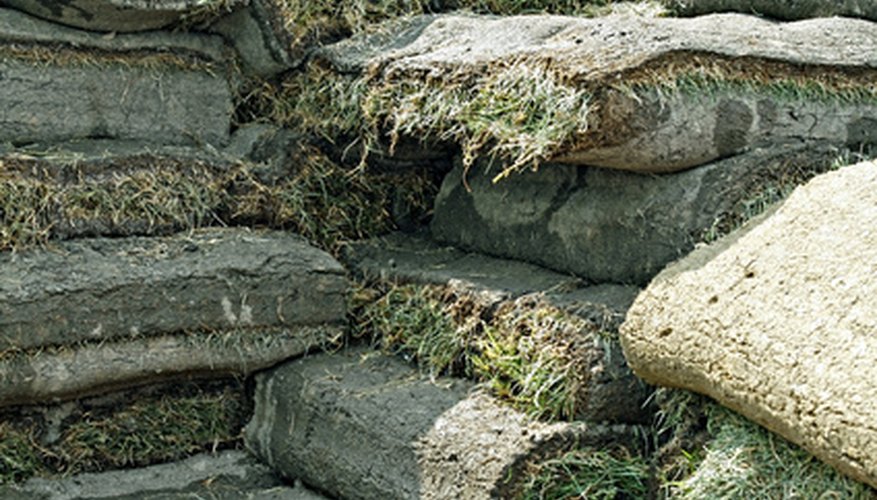A turf bench--a garden bench packed with soil and topped with a layer of grass or mat-forming herbs as the seat--was a common feature of medieval gardens, according to the Metropolitan Museum of Art. The Metropolitan's Cloisters Museums and Gardens included a turf bench in its 2010 redesign of the Trie herb garden. These living garden benches were often made with wooden or stone box frames and sometimes included a trellis attached as a back to create a private bower, according to Sylvia Landsberg in "The Medieval Garden." To create an eye-catching--and authentic--living turf bench, start with a free-standing, frameless design.
- A turf bench--a garden bench packed with soil and topped with a layer of grass or mat-forming herbs as the seat--was a common feature of medieval gardens, according to the Metropolitan Museum of Art.
- These living garden benches were often made with wooden or stone box frames and sometimes included a trellis attached as a back to create a private bower, according to Sylvia Landsberg in "The Medieval Garden."
Remove the grass in the 2-by-4-foot area where you would like your living bench. Make sure it is in an area that receives full sun and has easy access to water, as the bench cannot be moved.
Lay out the plywood or waferboard sheets on the ground. Nail stakes to each board--with your hammer and 10D nails--every foot along the flat length of each (starting and finishing at the ends), so the pointed ends protrude about 10 inches from the bottom of the sheet of wood.
Water the ground where you will construct the bench with your hose to soften the soil.
- Water the ground where you will construct the bench with your hose to soften the soil.
Push each piece of staked wood into the ground (with the stakes on the outside) to form a rectangle form that measures 4 feet long, 2 feet deep and 2 feet tall.
Shovel soil into the form. Once a foot of soil is in place, lightly water the soil and tamp the soil down with your feet to make sure it forms a solid foundation for your bench, according to ReadyMade magazine online. Add another foot of soil, water it in, and compress again.
Remove the form. Work carefully so as not to disturb the soil. Make any necessary repairs by adding damp soil.
Apply handfuls of starter fertiliser across the top and to the damp sides of the bench.
Unroll your sod strips. Sod is generally sold in 20-by-40-inch strips, according to Stauffers of Kissel Hill Garden Centers. Lay the strips over the top of the bench so there is an 8-inch overhang on each side.
Tile the ends and the remainder of the sides of the bench with sod, cutting as necessary with a serrated knife. Attach the sod to the vertical surfaces of the bench using U-shaped metal landscape staples.
- Apply handfuls of starter fertiliser across the top and to the damp sides of the bench.
- Tile the ends and the remainder of the sides of the bench with sod, cutting as necessary with a serrated knife.
Water frequently and do not sit on the bench for several weeks, until the sod becomes rooted.
TIP
Maintain with hand-held grass shears or an electric trimmer. If you find the bench is too damp, cut in a flat piece of natural stone or a paver into its surface. The grass will grow around it to secure it to the bench, according to Garden Gab. Add flowers or scent to your living bench by cutting small pockets in the sod to insert herbs like chamomile or thyme, or even crocus bulbs to bloom in the early spring.
WARNING
The grass may not grow evenly on all sides because of differing amounts of sun exposure, according to the Metropolitan Museum.
